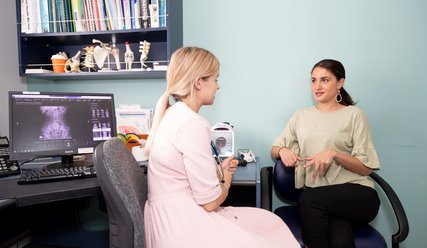GPs working for free to complete crucial patient follow-up – study shows
The well-documented workforce shortages have meant that specialist GPs and rural hospital doctors are having to take on more work and work longer hours.
To understand how widespread this issue is, and how it is truly impacting our membership of over 5,800 specialists, The Royal New Zealand College of General Practitioners developed the ‘Your Work Counts’ project. The aim is to identify how much time is being spent on key tasks and addressing the unrecognised and often non-remunerated work that GPs put in to caring for people throughout the course of their lives.
The data collected will help the College to develop evidence-based guidelines around:
- What a fair and reasonable 40-hour week looks like
- Safe and sustainable patient loads
- Ratios for how many GPs per 100,000 patients each region, and the country, needs
College Medical Director and Tauranga GP Dr Luke Bradford says, “Until now, most discussions about the way we work have focused only on the patient-facing aspect. The College wanted to highlight the amount of work that is actually required to look after a primary care patient load as a specialist GP or rural hospital doctor.
“The results, below, clearly show the demands being placed on the workforce and that there needs to be a change in thinking around GP workloads and the funding model.”
The results
Over 400 members completed the project’s first diary study. At the end of every day for 14 days, including weekends, participants recorded the time they spent on five key tasks:
- Contact time (patient consultations)
- Non-contact clinical time
- Training and education
- Clinical governance and practice improvement
- Management (running the practice)
**see below for full results on task breakdown
Not surprisingly, clinical contact time with patients took up the most time over the two-week period – 56.4%.
Non-contact clinical time, which consists of all the paperwork, emails and administrative tasks generated from patient consultations came in second at 30.8% of participants’ time.
Dr Bradford explains, “These results show that over an 8-hour working day (without breaks), 4.5 hours of patient consultations generates 3.5 hours of follow-up work and helps to explain why getting an appointment can be difficult.
“To make ourselves available to see more patients, many choose to move the non-contact clinical work into our evenings or weekends, or sacrifice training, teaching or clinical governance time to complete it. This is the work that we are not remunerated for, despite it being a core part of our role.
“For our hospital-based specialist colleagues, their clinical time accounts for approximately 70% of their role. However, this incorporates the non-contact clinical work for their patients. All health professionals have patient follow-up, so why is the way it’s remunerated and structured so different?”
Looking at the hours that participants worked over the two-week period:
- 57 respondents (14%) worked all 14 days in the study
- 64 respondents (15%) worked all four weekend days
- 76 respondents (18%) worked at least one 50+ hour week
- 34 respondents (8%) worked 50+ hours each week
- 22 respondents (5%) worked at least one 60+ hour week
- 7 respondents (2%) worked 60+ hours each week
College President and Wellington GP Dr Samantha Murton says, “The breadth and complexity of care we provide is unlike any other medical specialty. We’re working longer hours to try and plug the gaps of the workforce shortages because we want to be available to patients when they need us. But these extra hours of work, paired with all the follow-up work that comes with it, is not a long-term solution.
“We do this work because it needs to be done. It is a key part of our role. Imagine the consequences if we didn’t make that referral, email a specialist, schedule a procedure or review test results.”
Dr Bradford says, “Having dedicated and remunerated time to do important patient follow-up and administrative work during the day is not an unreasonable expectation to have. Neither is working more manageable hours and having a sustainable patient load.”
The ‘Your Work Counts’ project will be running another diary study which will be easier for members to take part in during a period that suits them. This will allow us to build on this data and further support the College’s advocacy efforts to have the profession valued appropriately for the work that they do and the complexity of the care they provide, and that reflects their individual situations.
RESULTS AT A GLANCE
Time spent on key tasks:
Consults - 56.4%
Non-contact - 30.8%
Training - 6.4%
Governance - 2.6%
Management - 3.3%
Other - 0.5%
Demographics of respondents:
Gender
- 312 (75%) women
- 102 (25%) men
- 1 gender diverse
- 2 preferred not to say
Ethnicity
- 351 (84%) European
- 16 (4%) Māori
- 5 (1%) Pasifika
- 57 (14%) Asian
- 3 (neg) MELAA
Location
- 332 (79%) Urban
- 37 (9%) Not clearly urban or rural
- 48 (12%) Rural
Related

26 September 2025 | Media releases
Up to 700 GP trainees to benefit from funding boost this year

21 August 2025 | Media releases
Funding round opens for research benefitting general practice

30 July 2025 | Media releases